Assessing Earthquake-Triggered Ecosystem Carbon Loss Using Field Sampling and UAV Observation
Abstract
1. Introduction
2. Materials and Methods
2.1. Study Area
2.2. Experimental Design and Sampling Site Arrangement
2.3. Soil Sampling and Analysis
2.4. Vegetation Survey and Analysis
2.5. LiDAR Data Acquisition and Analysis
3. Results
3.1. Soil Carbon Storage in Damaged Areas Dropped Significantly
3.2. Secondary Disasters Stripped Away the Surface Vegetation
3.3. Inversion of Forest Biomass in Undisturbed Areas Based on LiDAR
3.4. Estimation of Carbon Loss in Ecosystems After the Earthquake
4. Discussion
5. Conclusions
Supplementary Materials
Author Contributions
Funding
Data Availability Statement
Conflicts of Interest
References
- Fan, X.; Scaringi, G.; Korup, O.; West, A.J.; van Westen, C.J.; Tanyas, H.; Hovius, N.; Hales, T.C.; Jibson, R.W.; Allstadt, K.E.; et al. Earthquake-Induced Chains of Geologic Hazards: Patterns, Mechanisms, and Impacts. Rev. Geophys. 2019, 57, 421–503. [Google Scholar] [CrossRef]
- Wu, X.; Xu, C.; Xu, X.; Chen, G.; Zhu, A.; Zhang, L.; Yu, G.; Du, K. A Web-GIS hazards information system of the 2008 Wenchuan Earthquake in China. Nat. Hazards Res. 2022, 2, 210–217. [Google Scholar] [CrossRef]
- Xu, C. Landslides triggered by the 2015 Gorkha, Nepal earthquake. Int. Arch. Photogramm. Remote Sens. Spatial Inf. Sci. 2018, XLII-3, 1989–1993. [Google Scholar] [CrossRef]
- Xu, C.; Xu, X.; Yao, X.; Dai, F. Three (nearly) complete inventories of landslides triggered by the May 12, 2008 Wenchuan Mw 7.9 earthquake of China and their spatial distribution statistical analysis. Landslides 2014, 11, 441–461. [Google Scholar] [CrossRef]
- Huang, Y.; Xie, C.; Li, T.; Xu, C.; He, X.; Shao, X.; Xu, X.; Zhan, T.; Chen, Z. An open-accessed inventory of landslides triggered by the MS 6.8 Luding earthquake, China on September 5, 2022. Earthq. Res. Adv. 2023, 3, 100181. [Google Scholar] [CrossRef]
- Hilton, R.G.; Meunier, P.; Hovius, N.; Bellingham, P.J.; Galy, A. Landslide impact on organic carbon cycling in a temperate montane forest. Earth Surf. Process. Landf. 2011, 36, 1670–1679. [Google Scholar] [CrossRef]
- Liu, J.; Fan, X.; Tang, X.; Xu, Q.; Harvey, E.L.; Hales, T.C.; Jin, Z. Ecosystem carbon stock loss after a mega earthquake. CATENA 2022, 216, 106393. [Google Scholar] [CrossRef]
- Cui, P.; Lin, Y.-M.; Chen, C. Destruction of vegetation due to geo-hazards and its environmental impacts in the Wenchuan earthquake areas. Ecol. Eng. 2012, 44, 61–69. [Google Scholar] [CrossRef]
- Cramer, W.; Bondeau, A.; Woodward, F.I.; Prentice, I.C.; Betts, R.A.; Brovkin, V.; Cox, P.M.; Fisher, V.; Foley, J.A.; Friend, A.D.; et al. Global response of terrestrial ecosystem structure and function to CO2 and climate change: Results from six dynamic global vegetation models. Glob. Change Biol. 2001, 7, 357–373. [Google Scholar] [CrossRef]
- Reichle, D.E. Bibliography, in the Global Carbon Cycle and Climate Change, 2nd ed.; Reichle, D.E., Ed.; Elsevier: Amsterdam, The Netherlands, 2023; pp. 571–652. [Google Scholar]
- Yunus, A.P.; Fan, X.; Tang, X.; Jie, D.; Xu, Q.; Huang, R. Decadal vegetation succession from MODIS reveals the spatio-temporal evolution of post-seismic landsliding after the 2008 Wenchuan earthquake. Remote Sens. Environ. 2020, 236, 111476. [Google Scholar] [CrossRef]
- Gomes, P.I.; Aththanayake, U.; Deng, W.; Li, A.; Zhao, W.; Jayathilaka, T. Ecological fragmentation two years after a major landslide: Correlations between vegetation indices and geo-environmental factors. Ecol. Eng. 2020, 153, 105914. [Google Scholar] [CrossRef]
- Wang, J.; Howarth, J.D.; McClymont, E.L.; Densmore, A.L.; Fitzsimons, S.J.; Croissant, T.; Gröcke, D.R.; West, M.D.; Harvey, E.L.; Frith, N.V.; et al. Long-term patterns of hillslope erosion by earthquake-induced landslides shape mountain landscapes. Sci. Adv. 2020, 6, eaaz6446. [Google Scholar] [CrossRef] [PubMed]
- Hilton, R.G.; West, A.J. Mountains, erosion and the carbon cycle. Nat. Rev. Earth Environ. 2020, 1, 284–299. [Google Scholar] [CrossRef]
- CENC. China Earthquake Networks Center. 2024. Available online: https://news.ceic.ac.cn/ (accessed on 10 March 2025).
- Fan, S.; Guan, F.; Xu, X.; Forrester, D.I.; Ma, W.; Tang, X. Ecosystem Carbon Stock Loss after Land Use Change in Subtropical Forests in China. Forests 2016, 7, 142. [Google Scholar] [CrossRef]
- Guan, F.; Tang, X.; Fan, S.; Zhao, J.; Peng, C. Changes in soil carbon and nitrogen stocks followed the conversion from secondary forest to Chinese fir and Moso bamboo plantations. CATENA 2015, 133, 455–460. [Google Scholar] [CrossRef]
- Coomes, D.A.; Allen, R.B.; A Scott, N.; Goulding, C.; Beets, P. Designing systems to monitor carbon stocks in forests and shrublands. For. Ecol. Manag. 2002, 164, 89–108. [Google Scholar] [CrossRef]
- Xiao, J.; Chevallier, F.; Gomez, C.; Guanter, L.; Hicke, J.A.; Huete, A.R.; Ichii, K.; Ni, W.; Pang, Y.; Rahman, A.F.; et al. Remote sensing of the terrestrial carbon cycle: A review of advances over 50 years. Remote Sens. Environ. 2019, 233, 111383. [Google Scholar] [CrossRef]
- Fan, G.; Zhang, B.; Zhou, J.; Wang, R.; Xu, Q.; Zeng, X.; Lu, F.; Luo, W.; Cai, H.; Wang, Y.; et al. Satellite Image Fusion Airborne LiDAR Point-Clouds-Driven Machine Learning Modeling to Predict the Carbon Stock of Typical Subtropical Plantation in China. Forests 2024, 15, 751. [Google Scholar] [CrossRef]
- Sun, H.Z.; Zhou, L.; Bao, F.; Wu, X. Landscape pattern and diversity of trees and shrubs in the alpine canyon area. J. Cent. South Univ. For. Technol. 2022, 42, 147–159. [Google Scholar] [CrossRef]
- Xu, X.; Cheng, J.; Xu, C.; Li, X.; Yu, G.; Chen, G.; Tan, X.; Wu, X. Discussion on block kinematic model and future themed areas for earthquake occurrence in the Tibetan Plateau: Inspiration from the Ludian and Jinggu earthquakes. Dizhen Dizhi 2014, 36, 1116–1134. [Google Scholar]
- Wang, L.; Li, Z.; Wang, D.; Liao, S.; Nie, X.; Liu, Y. Factors controlling soil organic carbon with depth at the basin scale. CATENA 2022, 217, 106478. [Google Scholar] [CrossRef]
- Odebiri, O.; Mutanga, O.; Odindi, J.; Slotow, R.; Mafongoya, P.; Lottering, R.; Naicker, R.; Matongera, T.N.; Mngadi, M. Remote sensing of depth-induced variations in soil organic carbon stocks distribution within different vegetated landscapes. CATENA 2024, 243, 108216. [Google Scholar] [CrossRef] [PubMed]
- Zhang, L.; Xie, Z.; Zhao, R.; Wang, Y. The impact of land use change on soil organic carbon and labile organic carbon stocks in the Longzhong region of Loess Plateau. J. Arid. Land 2012, 4, 241–250. [Google Scholar] [CrossRef]
- Pu, W.; Zhao, M.; Du, J.; Liu, Y.; Huang, C. Effect of Geographical Conditions on Moss–Soil Crust Restoration on Cut Rock Slopes in a Mountainous Area in Western Sichuan, China. Sustainability 2023, 15, 1990. [Google Scholar] [CrossRef]
- Xie, Z.; Zhu, J.; Liu, G.; Cadisch, G.; Hasegawa, T.; Chen, C.; Sun, H.; Tang, H.; Zeng, Q. Soil organic carbon stocks in China and changes from 1980s to 2000s. Glob. Change Biol. 2007, 13, 1989–2007. [Google Scholar] [CrossRef]
- Zeng, W. Assessment of Individual Tree Above- and Below-Ground Biomass Models for 34 Tree Species in China; Book Publisher International: Bhanjipur, India, 2020; pp. 26–37. [Google Scholar]
- IPCC. Climate Change 2022: Impacts, Adaptation, and Vulnerability. Contribution of Working Group II to the Sixth Assessment Report of the Intergovernmental Panel on Climate Change; Pörtner, D.C.R.H.-O., Tignor, M., Poloczanska, E.S., Mintenbeck, K., Alegría, A., Craig, M., Langsdorf, S., Löschke, S., Möller, V., Okem, A., et al., Eds.; Cambridge University Press: Cambridge, UK; New York, NY, USA, 2022; 3056p. [Google Scholar]
- Zhao, X.; Guo, Q.; Su, Y.; Xue, B. Improved progressive TIN densification filtering algorithm for airborne LiDAR data in forested areas. ISPRS J. Photogramm. Remote Sens. 2016, 117, 79–91. [Google Scholar] [CrossRef]
- Khosravipour, A.; Skidmore, A.K.; Isenburg, M. Generating spike-free digital surface models using LiDAR raw point clouds: A new approach for forestry applications. Int. J. Appl. Earth Obs. Geoinf. 2016, 52, 104–114. [Google Scholar] [CrossRef]
- Chen, Q.; Baldocchi, D.; Gong, P.; Kelly, M. Isolating Individual Trees in a Savanna Woodland using Small Footprint LIDAR data. Photogramm. Eng. Remote Sens. 2006, 72, 923–932. [Google Scholar] [CrossRef]
- Wang, Q.; Wang, S.; Yu, X. Decline of soil fertility during forest conversion of secondary forest to Chinese fir plantations in subtropical China. Land Degrad. Dev. 2011, 22, 444–452. [Google Scholar] [CrossRef]
- Wang, X.; Fan, X.; Fang, C.; Dai, L.; Zhang, W.; Zheng, H.; Xu, Q. Long-Term Landslide Evolution and Restoration After the Wenchuan Earthquake Revealed by Time-Series Remote Sensing Images. Geophys. Res. Lett. 2024, 51, e2023GL106422. [Google Scholar] [CrossRef]
- Schomakers, J.; Jien, S.-H.; Lee, T.-Y.; Huang, J.-C.; Hseu, Z.-Y.; Lin, Z.L.; Lee, L.-C.; Hein, T.; Mentler, A.; Zehetner, F. Soil and biomass carbon re-accumulation after landslide disturbances. Geomorphology 2017, 288, 164–174. [Google Scholar] [CrossRef] [PubMed]
- Wang, J.; Wang, Z.; Cheng, H.; Kang, J.; Liu, X. Land Cover Changing Pattern in Pre- and Post-Earthquake Affected Area from Remote Sensing Data: A Case of Lushan County, Sichuan Province. Land 2022, 11, 1205. [Google Scholar] [CrossRef]
- Mi, H.; Cui, J.; Ning, Y.; Liu, Y.; Zhu, M. Post-earthquake recovery monitoring and driving factors analysis of the 2014 Ludian Ms6.5 earthquake in Yunnan, China based on LUCC. Stoch. Environ. Res. Risk Assess. 2023, 37, 4991–5007. [Google Scholar] [CrossRef]
- Pierson, T.C. Dominant particle support mechanisms in debris flows at Mt Thomas, New Zealand, and implications for flow mobility. Sedimentology 1981, 28, 49–60. [Google Scholar] [CrossRef]
- Francis, O.; Fan, X.; Hales, T.; Hobley, D.; Xu, Q.; Huang, R. The Fate of Sediment After a Large Earthquake. J. Geophys. Res. Earth Surf. 2022, 127, e2021JF006352. [Google Scholar] [CrossRef]
- Yang, W.; Qi, W.; Zhou, J. Decreased post-seismic landslides linked to vegetation recovery after the 2008 Wenchuan earthquake. Ecol. Indic. 2018, 89, 438–444. [Google Scholar] [CrossRef]
- McKinley, D.C.; Ryan, M.G.; Birdsey, R.A.; Giardina, C.P.; Harmon, M.E.; Heath, L.S.; Houghton, R.A.; Jackson, R.B.; Morrison, J.F.; Murray, B.C.; et al. A synthesis of current knowledge on forests and carbon storage in the United States. Ecol. Appl. 2011, 21, 1902–1924. [Google Scholar] [CrossRef]
- Nakata, Y.; Hayamizu, M.; Ishiyama, N. Assessing primary vegetation recovery from earthquake-induced landslide scars: A real-time kinematic unmanned aerial vehicle approach. Ecol. Eng. 2023, 193, 107019. [Google Scholar] [CrossRef]
- Navarro, A.; Young, M.; Allan, B.; Carnell, P.; Macreadie, P.; Ierodiaconou, D. The application of Unmanned Aerial Vehicles (UAVs) to estimate above-ground biomass of mangrove ecosystems. Remote Sens. Environ. 2020, 242, 111747. [Google Scholar] [CrossRef]
- Song, Z.; Tomasetto, F.; Niu, X.; Yan, W.Q.; Jiang, J.; Li, Y. Enabling Breeding Selection for Biomass in Slash Pine Using UAV-Based Imaging. Plant Phenomics 2022, 2022, 9783785. [Google Scholar] [CrossRef]
- Dai, W.; Fu, W.; Jiang, P.; Zhao, K.; Li, Y.; Tao, J. Spatial pattern of carbon stocks in forest ecosystems of a typical subtropical region of southeastern China. For. Ecol. Manag. 2018, 409, 288–297. [Google Scholar] [CrossRef]
- Zhang, J.-Q.; Yang, Z.-J.; Meng, Q.-K.; Wang, J.; Hu, K.-H.; Ge, Y.-G.; Su, F.-H.; Zhao, B.; Zhang, B.; Jiang, N.; et al. Distribution patterns of landslides triggered by the 2022 Ms 6.8 Luding earthquake, Sichuan, China. J. Mt. Sci. 2023, 20, 607–623. [Google Scholar] [CrossRef]
- Zhao, B.; Su, L.; Qiu, C.; Lu, H.; Zhang, B.; Zhang, J.; Geng, X.; Chen, H.; Wang, Y. Understanding of Landslides Induced by 2022 Luding Earthquake, China. J. Rock Mech. Geotech. Eng. 2024, in press. [CrossRef]

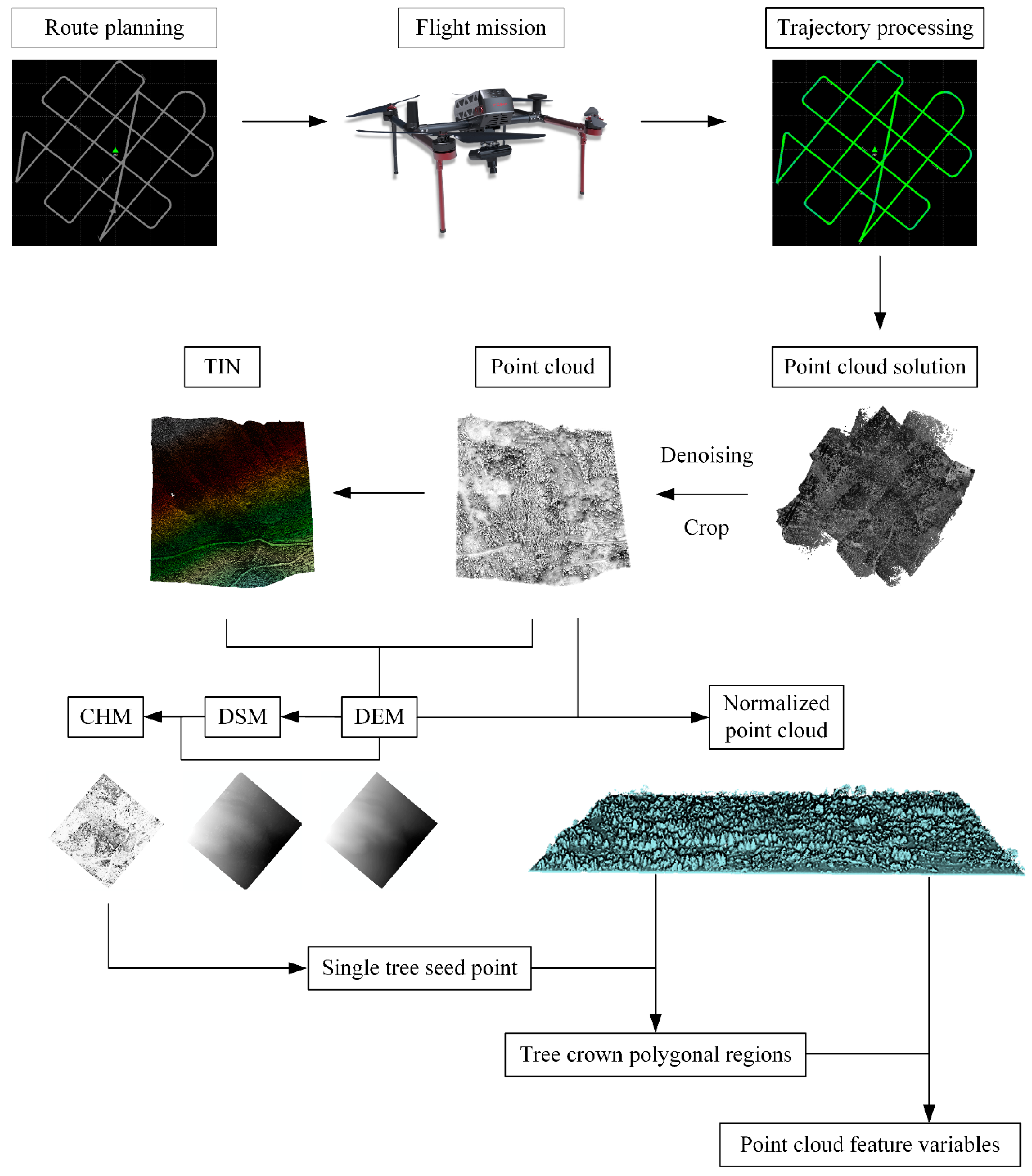
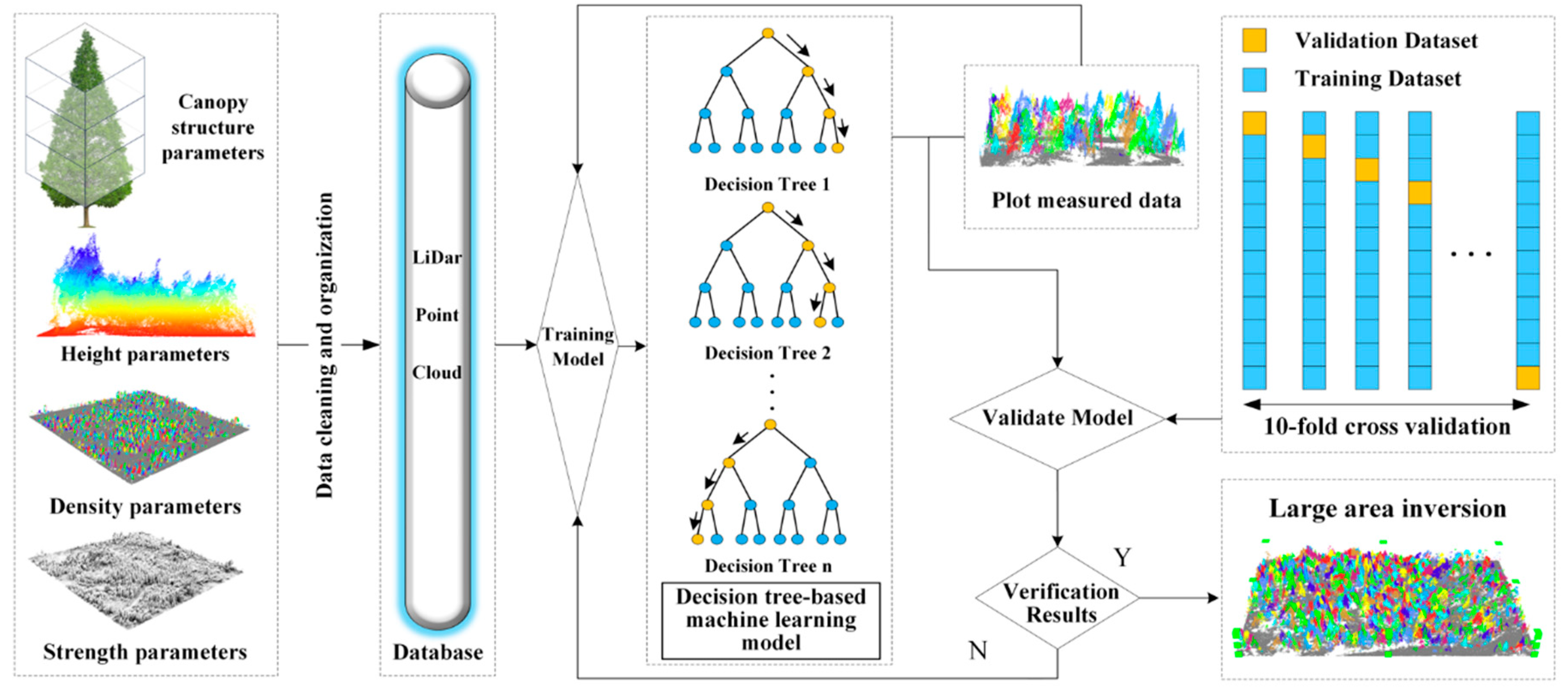
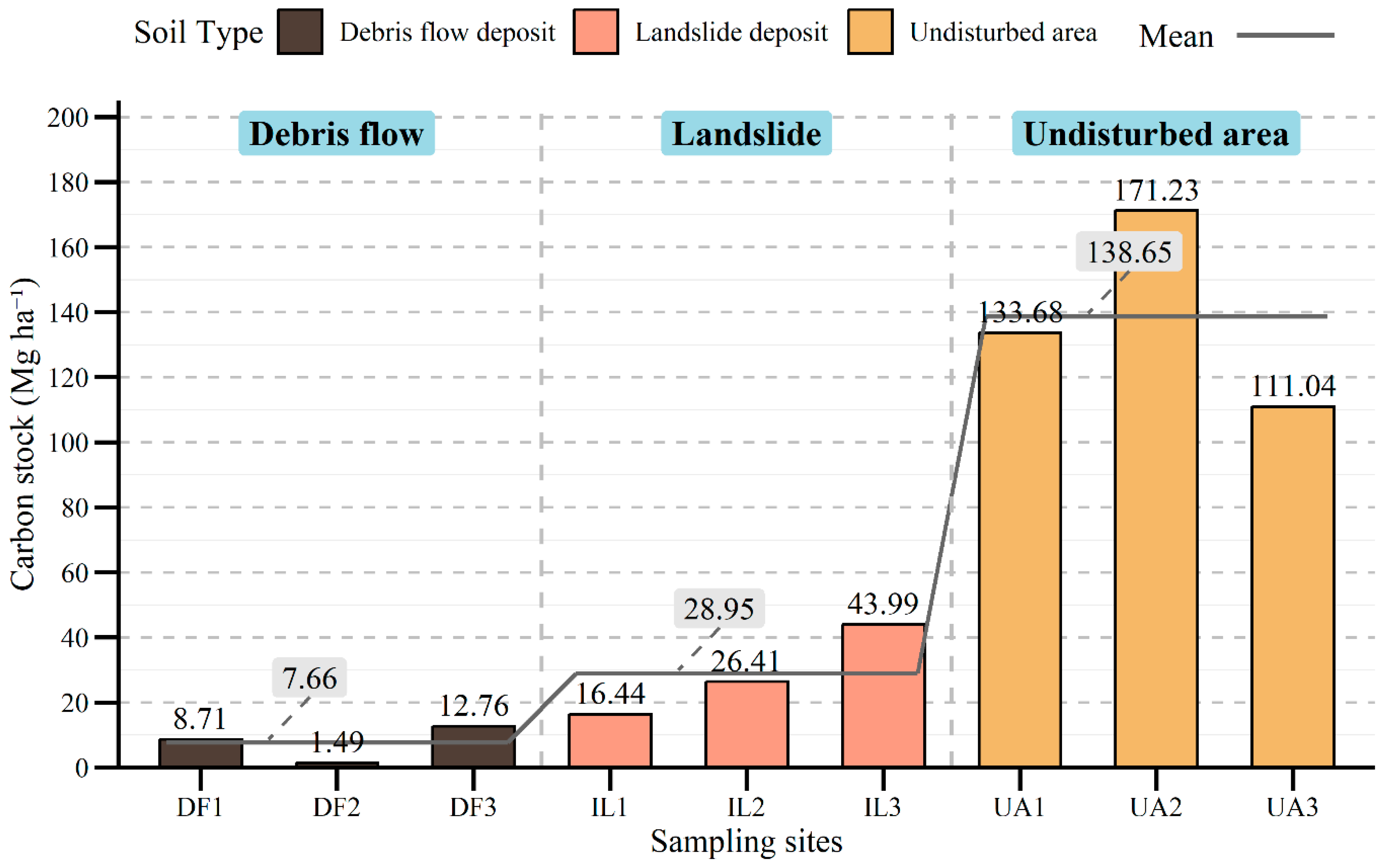
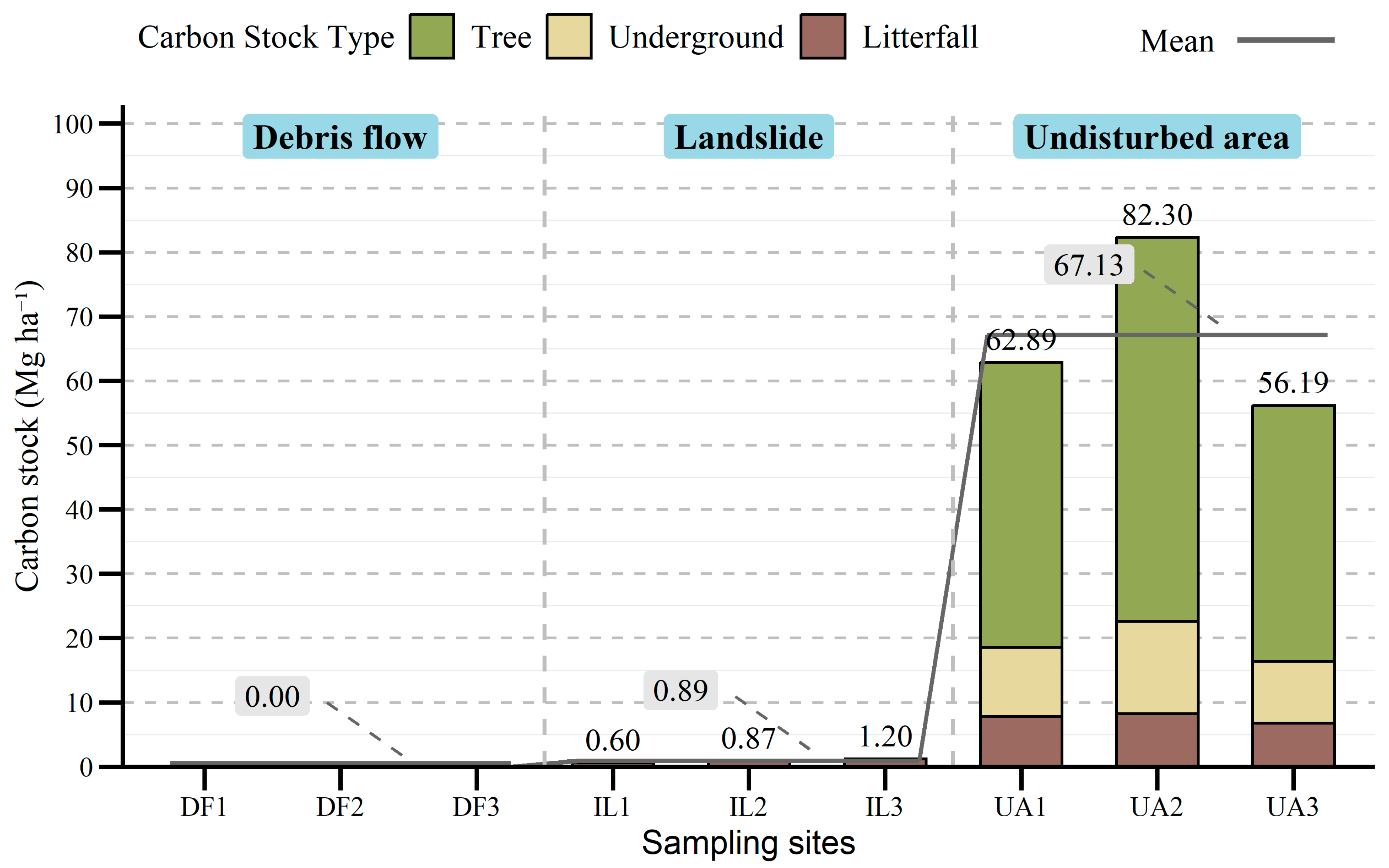
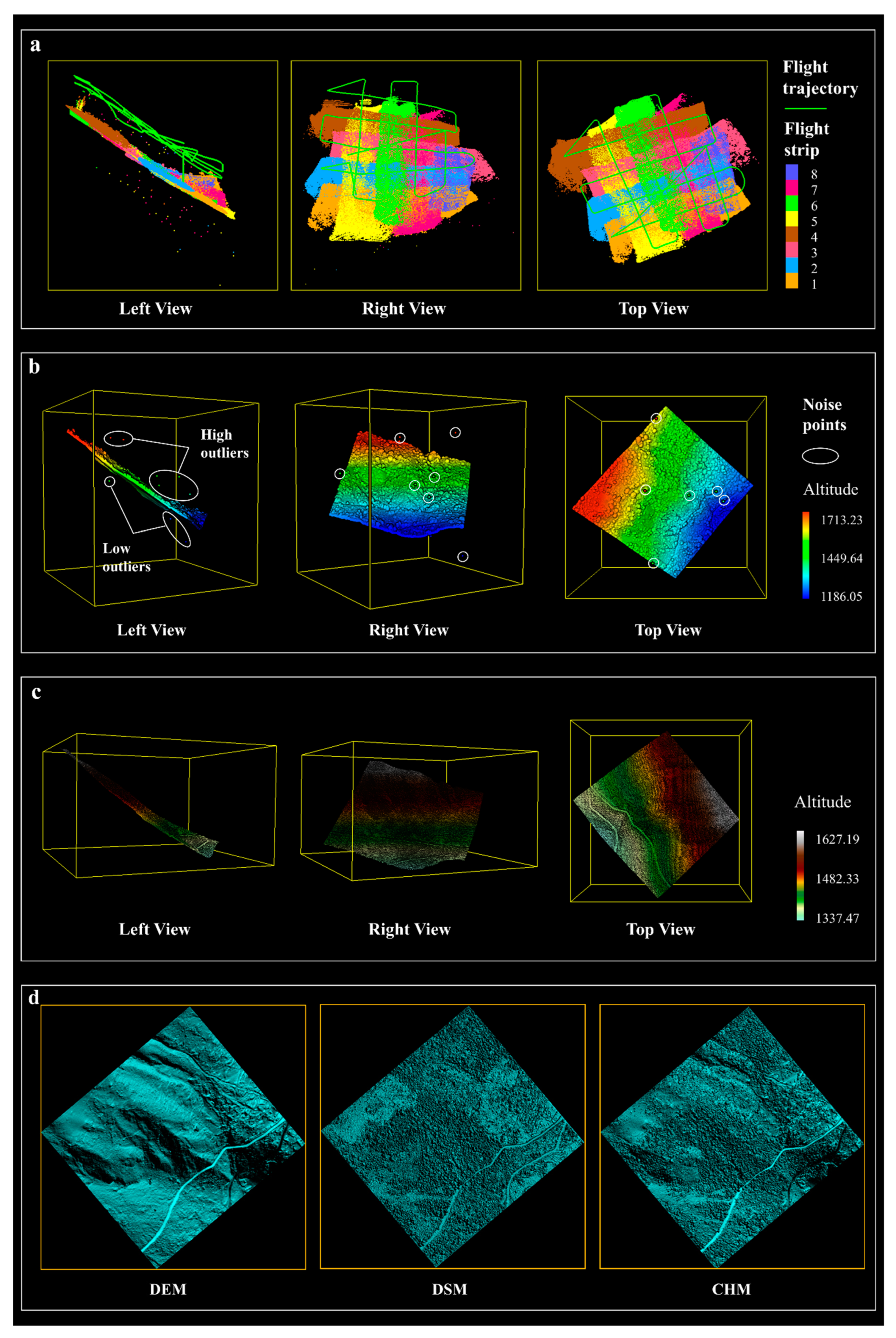
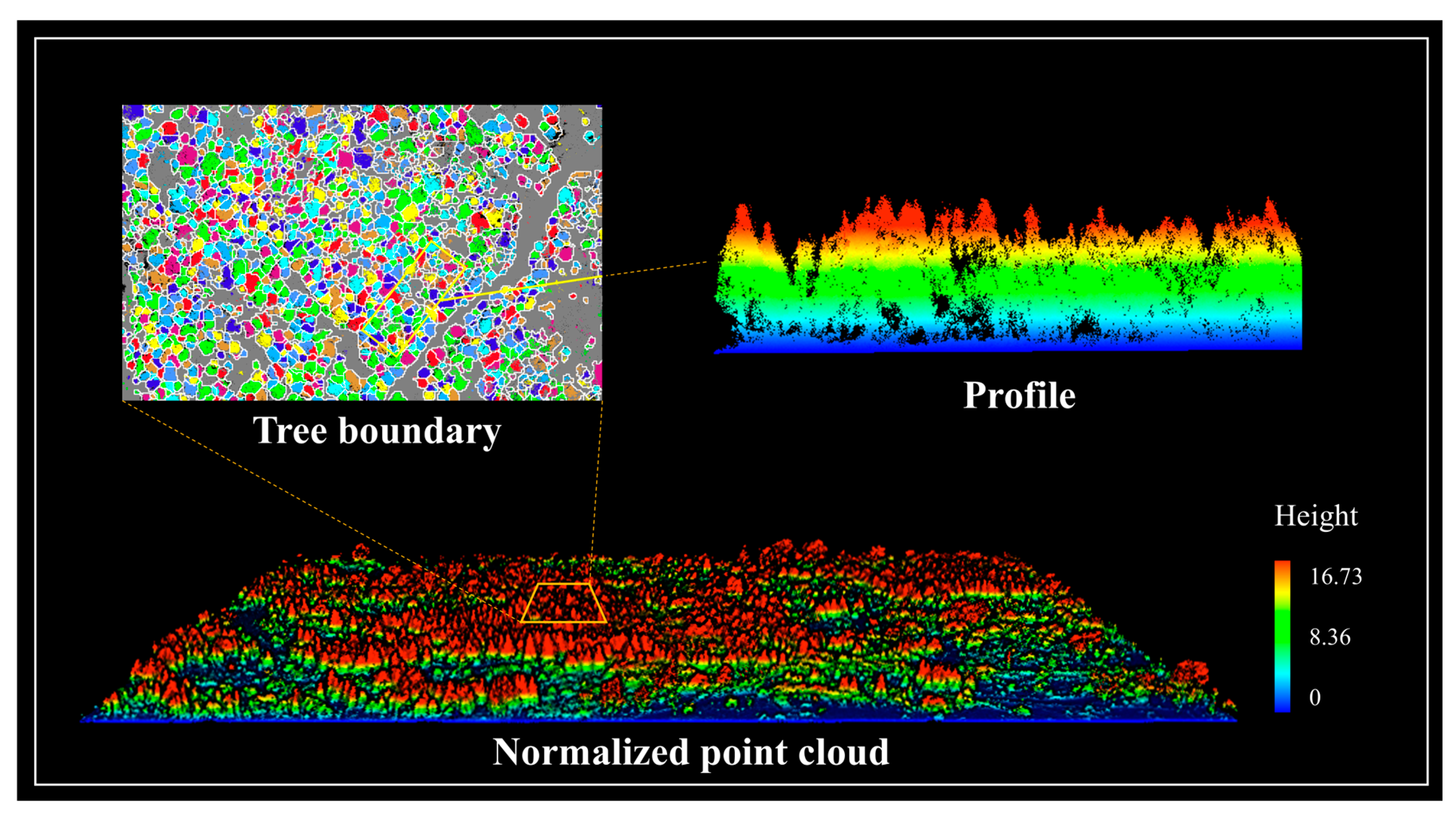
Disclaimer/Publisher’s Note: The statements, opinions and data contained in all publications are solely those of the individual author(s) and contributor(s) and not of MDPI and/or the editor(s). MDPI and/or the editor(s) disclaim responsibility for any injury to people or property resulting from any ideas, methods, instructions or products referred to in the content. |
© 2025 by the authors. Licensee MDPI, Basel, Switzerland. This article is an open access article distributed under the terms and conditions of the Creative Commons Attribution (CC BY) license (https://creativecommons.org/licenses/by/4.0/).
Share and Cite
Zeng, W.; Di, B.; Zhan, Y.; He, W.; Li, J.; Zuo, Z.; Yu, S.; Mi, T. Assessing Earthquake-Triggered Ecosystem Carbon Loss Using Field Sampling and UAV Observation. Land 2025, 14, 915. https://doi.org/10.3390/land14050915
Zeng W, Di B, Zhan Y, He W, Li J, Zuo Z, Yu S, Mi T. Assessing Earthquake-Triggered Ecosystem Carbon Loss Using Field Sampling and UAV Observation. Land. 2025; 14(5):915. https://doi.org/10.3390/land14050915
Chicago/Turabian StyleZeng, Wen, Baofeng Di, Yu Zhan, Wen He, Junhui Li, Ziquan Zuo, Siwen Yu, and Tan Mi. 2025. "Assessing Earthquake-Triggered Ecosystem Carbon Loss Using Field Sampling and UAV Observation" Land 14, no. 5: 915. https://doi.org/10.3390/land14050915
APA StyleZeng, W., Di, B., Zhan, Y., He, W., Li, J., Zuo, Z., Yu, S., & Mi, T. (2025). Assessing Earthquake-Triggered Ecosystem Carbon Loss Using Field Sampling and UAV Observation. Land, 14(5), 915. https://doi.org/10.3390/land14050915







